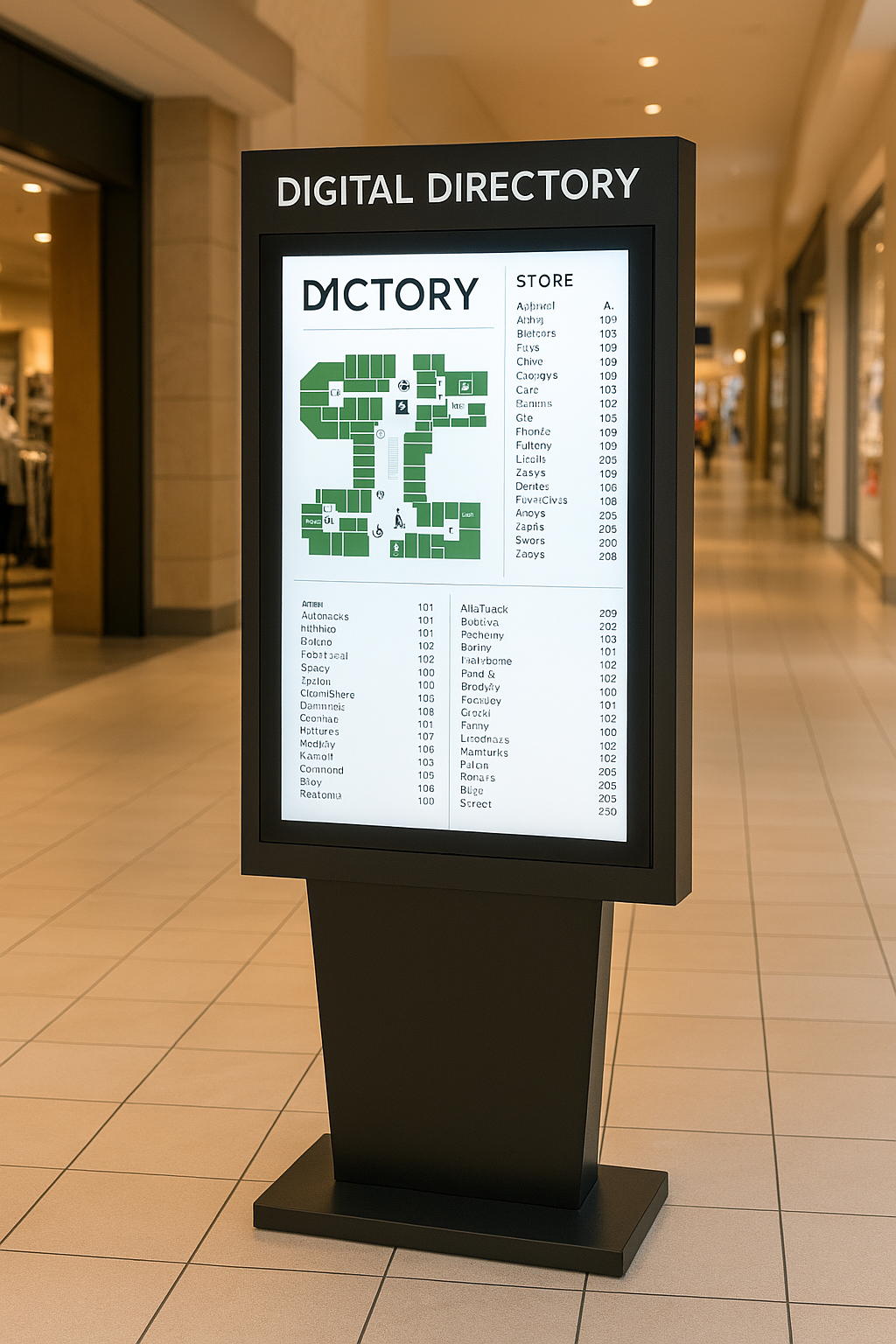How Digital Directories Simplify Navigation in Complex Buildings
In today’s fast-paced and information-driven world, navigating large and complex buildings—such as hospitals, corporate campuses, shopping malls, and government facilities—can be a daunting task. Traditional static signage often falls short in offering real-time directions or accessibility. Enter digital directories: innovative, interactive wayfinding systems that transform the visitor experience by making navigation seamless, intuitive, and efficient.
What Are Digital Directories?
Digital directories are electronic, touch-enabled display systems that provide real-time, interactive maps and information about a building’s layout, services, and amenities. Often powered by cloud-based software, these systems can be updated remotely, ensuring visitors always have access to the most current information. They are typically located in lobbies, entryways, or high-traffic areas and may also be accessible via mobile devices.
Key Benefits of Digital Directories
1. Enhanced User ExperienceDigital directories provide clear and easy-to-follow directions through interactive maps, searchable listings, and step-by-step navigation instructions. This user-friendly approach reduces confusion and enhances overall satisfaction, especially in unfamiliar or large facilities.
2. Real-Time Updates and AccuracyUnlike printed signs, digital directories can be updated in real-time to reflect changes such as office relocations, floor plan modifications, or event schedules. This ensures that visitors always have the most accurate and up-to-date navigation information.
3. Accessibility and InclusivityMany digital directory systems include features such as multilingual support, audio guidance, and ADA-compliant interfaces, making them accessible to a diverse range of users, including those with disabilities.
4. Integration with Other TechnologiesModern digital directories can integrate with other building systems such as security, visitor management, and event scheduling platforms. This creates a seamless digital ecosystem that enhances both navigation and operational efficiency.
5. Customization and BrandingOrganizations can tailor the look and functionality of digital directories to reflect their brand identity and specific needs. From color schemes to promotional content, these systems offer a dynamic platform to engage visitors beyond simple wayfinding.
Applications of Digital Directories
- Hospitals and Healthcare Centers: Helping patients and visitors locate departments, doctors’ offices, and amenities.
- Corporate Buildings: Guiding clients, employees, and guests to meeting rooms, departments, and services.
- Shopping Malls and Retail Centers: Showcasing store directories, promotions, and event information.
- Airports and Transportation Hubs: Assisting travelers in finding terminals, gates, services, and transport connections.
- Educational Institutions: Directing students and visitors to classrooms, administrative offices, and campus events.
Future Trends in Digital Wayfinding
With advancements in AI and IoT, the future of digital directories is increasingly intelligent and personalized. Features such as facial recognition, predictive routing, and mobile integration will further simplify navigation and enhance the overall experience in complex environments.
Conclusion
Digital directories are more than just maps—they are a critical part of smart building infrastructure, designed to simplify navigation and improve visitor experience. As buildings become larger and more complex, embracing digital wayfinding solutions will be essential for organizations looking to streamline operations, support inclusivity, and deliver a modern, efficient navigation experience.

















